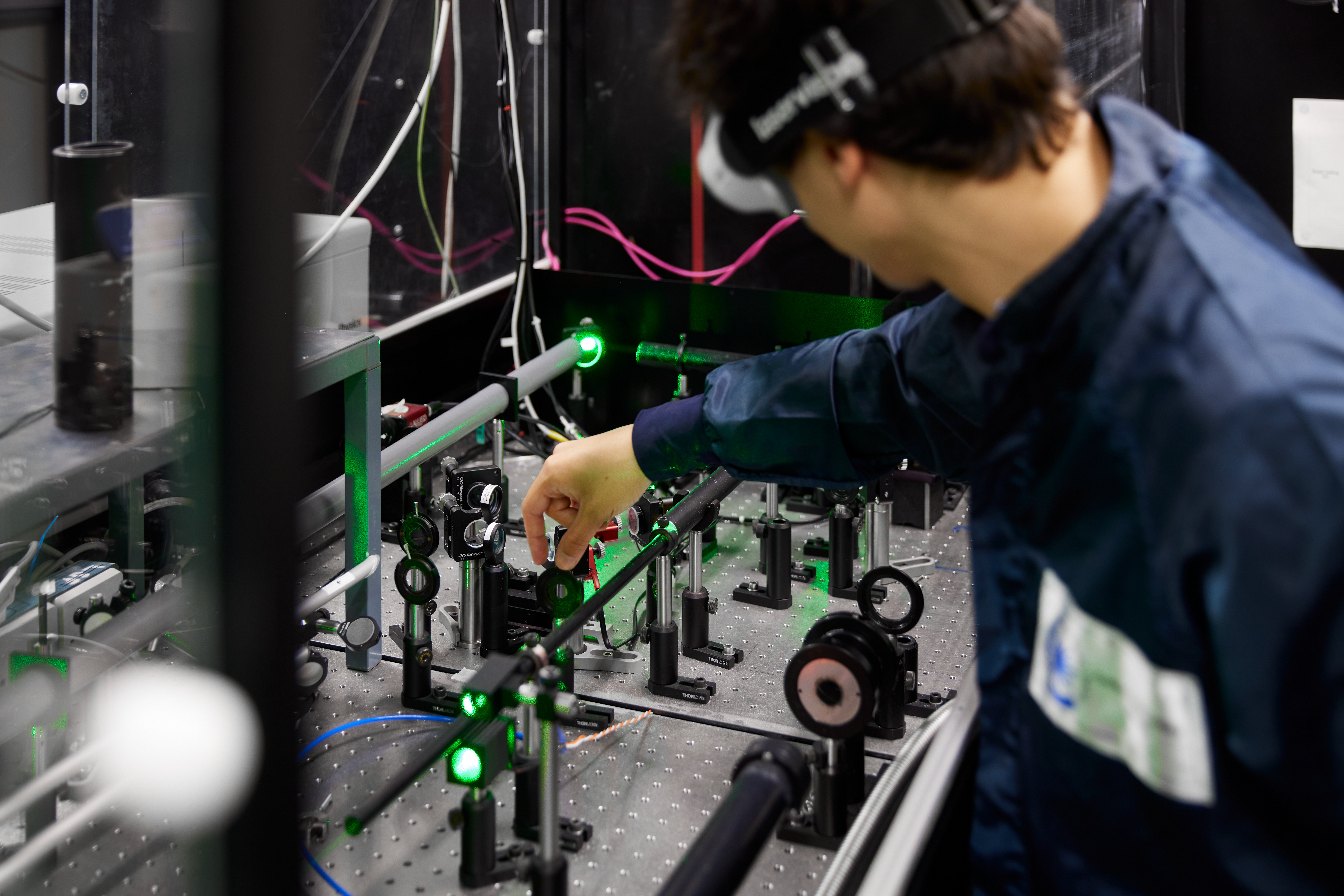 Focusing high-power laser pulses into small gas clouds can be used to accelerate electrons up to 99.99999 percent of the speed of light in just a few centimetres. This plasma acceleration technology has the potential to revolutionise particle accelerators by enabling highly compact machines capable of accelerating very short duration electron bunches to extremely high energies.
Focusing high-power laser pulses into small gas clouds can be used to accelerate electrons up to 99.99999 percent of the speed of light in just a few centimetres. This plasma acceleration technology has the potential to revolutionise particle accelerators by enabling highly compact machines capable of accelerating very short duration electron bunches to extremely high energies.
In this research using the CLF's laser Gemini, a new diagnostic technique was demonstrated, which can, for the first time, measure the rate at which energy is coupled into the plasma accelerator, and how efficiently that energy is transferred to the electron beam.
During the interaction between the laser and the plasma in the accelerator, the driving laser pulse is red-shifted after energy is transferred from the driving pulse to the plasma. This means the wavelength of the driving laser pulse is increasing, resulting in the laser being perceived as 'redder' than it was before it interacted with the plasma. In this research, how much red-shifting occurred during the laser-plasma interaction was determined by measuring the spectrum of the residual laser pulse after the accelerator.
This additional information gained about the dynamics of the driving laser pulse (by determining how much it was red-shifted) and the accelerated electron beam provides a new approach for the optimisation of plasma accelerators. Deploying this new diagnostic technique will aid researchers in improving the overall efficiency of plasma accelerators, an important objective for incorporating this novel technology in the next generation of particle accelerators.
Read the paper detailing this new diagnostic technique to find out more.
